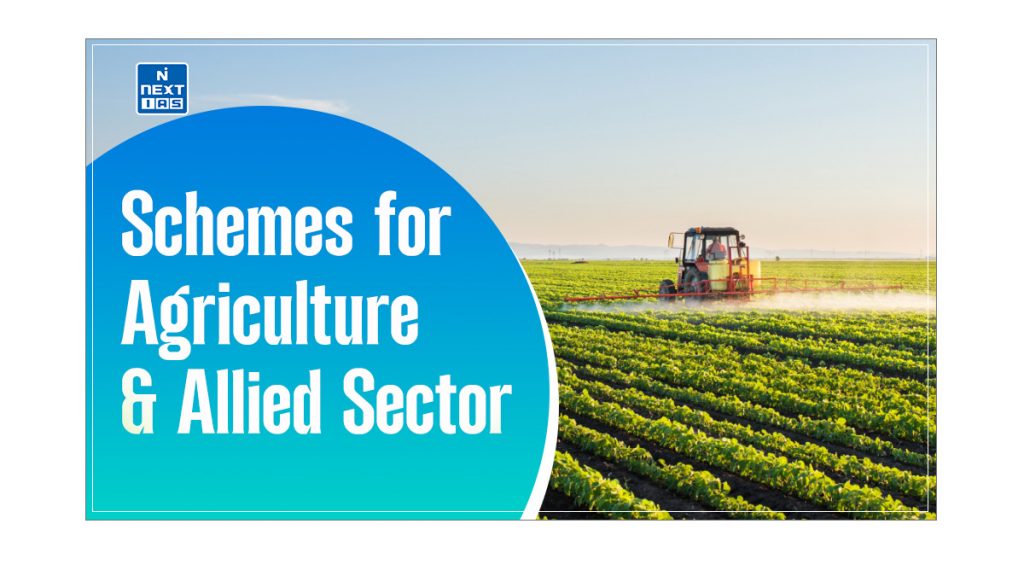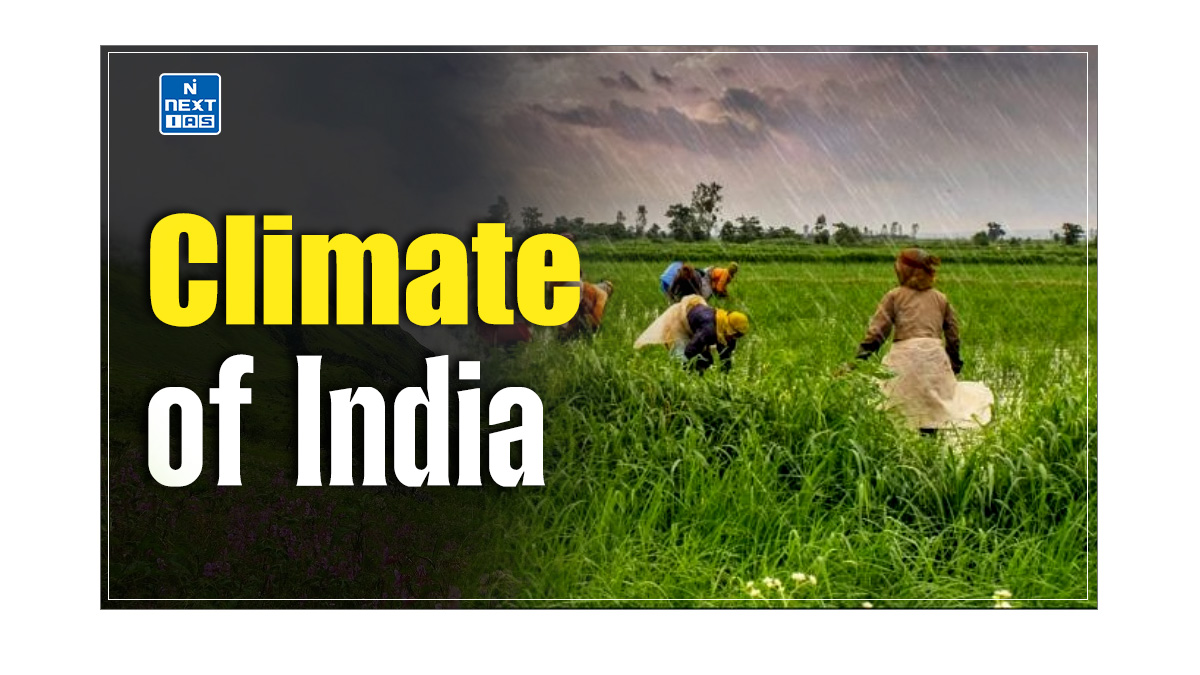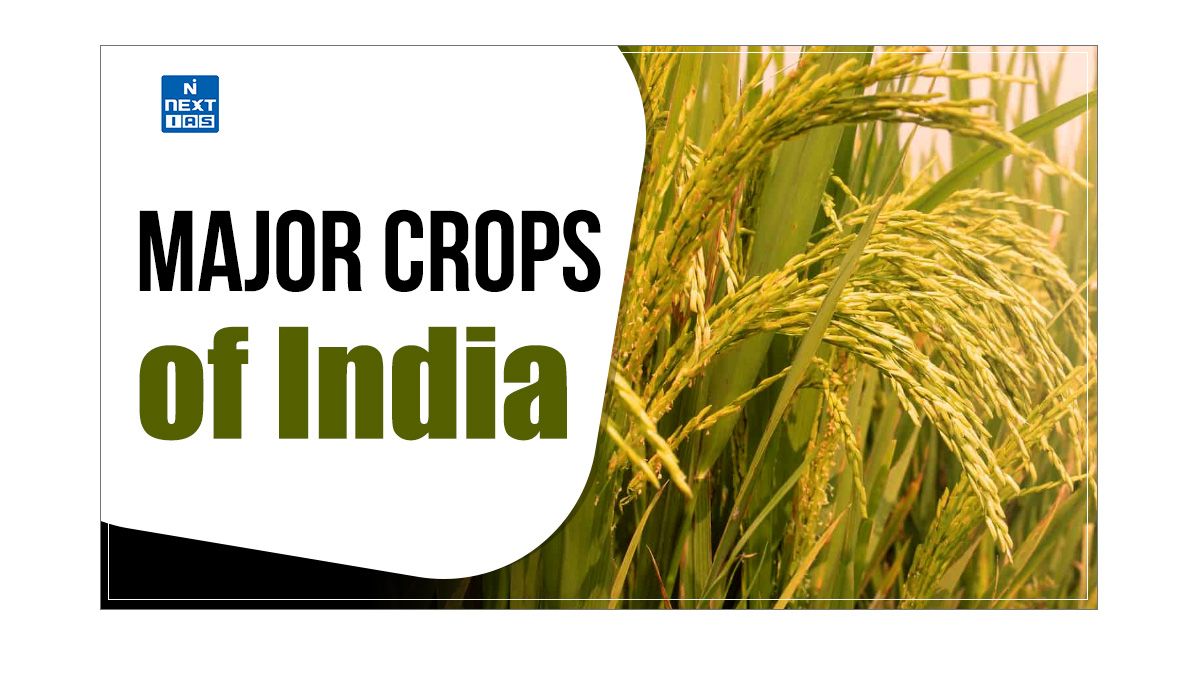
Agriculture and Allied Sectors form the backbone of India’s economy, encompassing crop production, livestock, fisheries, and forestry. These sectors ensure food security, employment, and rural development. This article aims to study in detail the various schemes and initiatives implemented by the Government of India to support and enhance the Agriculture and Allied Sectors.
About Agriculture and Allied Sector
- The Agriculture and Allied Sectors in India are the backbone of the country’s economy, contributing significantly to GDP and employment.
- This sector encompasses traditional agriculture as well as allied activities such as horticulture, livestock, fisheries, and forestry.
- It is crucial in ensuring food security, rural development, and poverty alleviation.
- The focus on agriculture and allied activities also supports the livelihoods of millions of small and marginal farmers nationwide.
Initiatives in Agriculture and Allied Sector
- Various initiatives of the Agriculture and allied Sector in India aim to boost productivity, ensure sustainability, and enhance farmers’ income.
- These schemes focus on modernising agricultural practices, promoting sustainable farming techniques, and providing financial support to farmers.
- They aim to improve market access, enhance post-harvest management, and encourage diversification into allied activities like horticulture, animal husbandry, and fisheries to ensure comprehensive rural development.
The following section discusses in detail the various initiatives and schemes initiated by the Government of India in the agriculture and allied sectors.
Pradhan Mantri Krishi Sinchayee Yojana, 2015
- The Government of India is committed to prioritising water conservation and its management.
- To this effect, Pradhan Mantri Krishi Sinchayee Yojana (PMKSY) has been formulated with the vision of extending the coverage of irrigation ‘Har Khet ko Pani’ and improving water use efficiency ‘More crop per drop’ in a focused manner with an end-to-end solution on source creation, distribution, management, field application, and extension activities.
Salient Features of Pradhan Mantri Krishi Sinchayee Yojana, 2015
- The Inter-Ministerial National Steering Committee (NSC) under PM, which includes Union Ministers of all concerned Ministries, will supervise and monitor it.
- A National Executive Committee (NEC) will be constituted under the Chairmanship of the Vice Chairman of NITI Aayog to oversee programme implementation.
- PMKSY has been formulated to amalgamate ongoing schemes, viz., the Accelerated Irrigation Benefit Programme (AIBP), the Integrated Watershed Management Programme (IWMP), and the On-Farm Water Management (OFWM) component of the National Mission on Sustainable Agriculture (NMSA).
- Water budgeting is done for all household, agriculture and industries.
- Investments will happen at the farm level, so farmers will know what is happening and can provide valuable feedback.
- The Long-term Irrigation Fund was recently instituted under PMKSY in NABARD to fund and fast-track the implementation of incomplete major and medium irrigation projects.
Objectives of Pradhan Mantri Krishi Sinchayee Yojana, 2015
- To achieve convergence of investments in irrigation at the field level.
- To enhance the recharge of aquifers and introduce sustainable water conservation practices.
- To explore the feasibility of reusing treated municipal wastewater for peri-urban agriculture.
- To attract greater private investments in irrigation.
- To promote extension activities relating to water harvesting, water management, and crop alignment for farmers and grassroots-level field functionaries.
Rashtriya Krishi Vikas Yojana – Raftaar (RKVY-Raftaar), 2007
- The RKVY Scheme was initiated in 2007 as an umbrella scheme to ensure the holistic development of agriculture and allied sectors.
- It allows states to choose their own agriculture and allied sector development activities, according to the district/state agriculture plan.
- In 2017, the Government approved the continuation of Rashtriya Krishi Vikas Yojana (RKVY) as Rashtriya Krishi Vikas Yojana- Remunerative Approaches for Agriculture and Allied Sector Rejuvenation (RKVY-RAFTAAR) for three years.
- Under RKVY-RAFTAAR, the major focus is on pre & post-harvest infrastructure, besides promoting agri-entrepreneurship and innovations.
Salient Features of Rashtriya Krishi Vikas Yojana
- It gave states considerable flexibility and autonomy for planning and executing programs.
- The States initiate decentralised planning for agriculture and allied sectors through District and State Agriculture Plans based on agro-climatic conditions, the availability of appropriate technology, and natural priorities.
- It will incentivise states to increase allocations for agriculture and allied sectors, help create post-harvest infrastructure, and promote private investment in the farm sector across the country.
- Fund Allocation – 60:40 grants between Centre and States in states and 90:10 for North Eastern States and Himalayan States through the following streams:-
- Infrastructure & Assets and Production Growth,
- RKVY-RAFTAAR special sub-schemes of National Priorities of Innovation and Agri-entrepreneur development.
Objectives of Rashtriya Krishi Vikas Yojana
- To make farming a remunerative economic activity by strengthening the farmer’s efforts, mitigating risk, and promoting agribusiness entrepreneurship.
- To attend national priorities through several sub-schemes.
- To empower youth through skill development, innovation and agri entrepreneurship-based business models.
National Food Security Mission, 2007
Given stagnating food grain production and the increasing consumption needs of the growing population, the Government of India launched this Centrally Sponsored Scheme, ‘National Food Security Mission,’ in October 2007.
Salient Features of National Food Security Mission, 2007
- The scheme’s approach is to bridge the yield gap with respect to these crops by disseminating improved technologies and farm management practices while focusing on districts with high potential but relatively low levels of productivity at present.
- The scheme’s major components are the National Food Security Mission for Rice, Wheat, Pulses, Coarse Cereals, and Commercial Crops.
Objectives of National Food Security Mission, 2007
- Expand the production of rice, wheat, pulses, coarse cereals, and commercial crops by increasing both the area under cultivation and productivity, while ensuring sustainability.
- Rejuvenate soil fertility and productivity on individual farms.
- Improve the economic conditions at the farm level.
National Horticulture Mission, 2005
- The National Horticulture Mission was launched in 2005-06 as a Centrally Sponsored Scheme to foster the comprehensive development of the horticulture sector using area-based and regionally tailored strategies.
- The scheme was subsumed in the Mission for Integration Development of Horticulture (MIDH) during 2014-15.
Objectives of National Horticulture Mission, 2005
- Foster comprehensive growth in the horticulture sector by implementing region-specific strategies that boost production, enhance nutritional security, and support farm household incomes.
- Integrate and harmonize various existing and upcoming horticulture development programs.
- Encourage the advancement and dissemination of technologies by combining traditional knowledge with modern scientific approaches.
- Generate employment opportunities for both skilled and unskilled individuals, particularly targeting unemployed youth.
Soil Health Card Scheme, 2015
- Launched by the Government of India in 2015, the Soil Health Card Scheme aims to provide farmers with soil cards detailing specific nutrient and fertilizer recommendations tailored to their individual farms.
- This will help farmers improve productivity through judicious input use.
Salient Features of Soil Health Card Scheme, 2015
- The scheme is implemented by the Department of Agriculture across all State and Union Territory governments.
- The State Government receives assistance in issuing Soil Health Cards and developing a database to improve service delivery.
- Soil Health Cards issued to farmers carry crop-wise recommendations of nutrients and fertilisers required for individual farms.
- The experts will analyse the soil’s strengths and weaknesses (micro-nutrient deficiency) collected from farms and suggest measures.
- to deal with it.
- It will contain the status of his soil concerning 12 parameters: N, P, K (Macronutrients); S (Secondary nutrients); Zn, Fe, Cu, Mn, Bo (Micronutrients); and pH, EC, OC (Physical parameters).
Objectives of Soil Health Card Scheme, 2015
- The aim is to issue soil health cards to all farmers every three years, providing a foundation for addressing nutrient deficiencies in fertilization practices.
- Additionally, it seeks to enhance the operation of Soil Testing Laboratories (STLs) through capacity building, engagement with agriculture students, and effective collaboration with the Indian Council of Agricultural Research (ICAR) and State Agricultural Universities (SAUs).
- To uniformly diagnose soil fertility-related constraints with standardised procedures for sampling across states.
- To build capacities of district and state-level staff and of progressive farmers to promote nutrient management practices.
PM Fasal Bima Yojana, 2016
Pradhan Mantri Fasal Bima Yojana (PMFBY) is a government-sponsored crop insurance scheme integrating multiple stakeholders on a single platform.
Salient Features of PM Fasal Bima Yojana, 2016
- It replaced all other insurance schemes except the Restructured Weather-Based Crop Insurance Scheme (which uses weather parameters as a proxy for crop yield to compensate cultivators for deemed crop losses).
- Farmers are to pay a uniform premium of only 2% for all Kharif crops, 1.5% for all Rabi crops, and 5% for horticultural crops.
- There is no upper limit on Government subsidies, so farmers can claim against the full sum insured without any reduction.
- The difference between the premium paid by farmers and the actuarial premium charged was shared equally by the central and state governments, each covering 50% of the difference.
- The scheme is optional for loanee farmers seeking crop loans for specified crops in designated areas and for non-loanee farmers as well.
- It covers yield losses from non-preventable risks such as natural fires, lightning, storms, hailstorms, cyclones, typhoons, tempests, hurricanes, and tornadoes.
- Additionally, it includes risks from floods, inundation, landslides, droughts, dry spells, and pests/diseases, as well as post-harvest losses.
- To streamline claims, technologies like smartphones and drones will be used for data capture and upload, and remote sensing will minimize the need for extensive crop-cutting experiments.
Objectives of PM Fasal Bima Yojana, 2016
- The scheme aims to offer insurance coverage and financial assistance to farmers affected by natural disasters, pests, and diseases.
- It seeks to stabilize farmers’ income to support their ongoing involvement in agriculture and encourage the adoption of innovative and modern farming practices.
- Additionally, it ensures the availability of credit for the agricultural sector.
- The intended beneficiaries include all farmers, such as sharecroppers and tenant farmers, who grow notified crops in designated areas during the season and have a vested interest in the crop.
| KISAN RATH |
| The government of India launched the ‘Kisan Rath App’ to on-board logistics service providers who can extend transportation facilities for the movement of agricultural and horticultural produce from farm gates to regulated markets, Farmer Producer Organization( FPO) Centres, village haats / GrAMS, warehouses, railway stations, airports, processing units, wholesale and retail markets etc. |
National Mission For Sustainable Agriculture, 2014
- The National Mission for Sustainable Agriculture (NMSA) has been formulated to enhance agricultural productivity, especially in rainfed areas.
- It focuses on integrated farming, water use efficiency, soil health management, and synergizing resource conservation.
Objectives of National Mission For Sustainable Agriculture
- The goal is to enhance agriculture by promoting location-specific Integrated and Composite Farming Systems that are more productive, sustainable, remunerative, and resilient to climate change.
- This includes conserving natural resources through effective soil and moisture management, implementing comprehensive soil health practices based on fertility maps, and optimizing fertilizer use.
- Efficient water management is prioritized to achieve “more crop per drop” by expanding coverage.
- Additionally, the initiative aims to build the capacity of farmers and stakeholders in collaboration with other ongoing missions, such as the National Mission on Agriculture Extension & Technology, National Food Security Mission, and National Initiative for Climate Resilient Agriculture (NICRA), focusing on climate change adaptation and mitigation.
- Pilot models will be tested in selected blocks to improve rainfed farming productivity, leveraging resources from schemes like MGNREGS, IWMP, and RKVY.
- Effective inter-departmental coordination will be established to achieve the objectives of the National Mission for Sustainable Agriculture under the National Action Plan on Climate Change (NAPCC).
Paramparagat Krishi Vikas Yojana, 2015
- The Paramparagat Krishi Vikas Yojana (PKVY) is a key component of the Soil Health Management (SHM) under the National Mission for Sustainable Agriculture (NMSA).
- PKVY promotes organic farming through a cluster-based approach, where organic villages are adopted, and certification is provided through Participatory Guarantee Systems (PGS).
Salient Features of Paramparagat Krishi Vikas Yojana
- Groups of farmers would be motivated to take up organic farming under the Paramparagat Krishi Vikas Yojana (PKVY).
- Fifty or more farmers will form a cluster having 50 acre of land to take up the organic farming under the scheme.
- In this way, during three years, 10,000 clusters will be formed covering a 5.0 lakh acre area under organic farming.
- There will be no liability on the farmers for expenditure on certification.
- Every farmer will be provided Rs. 20,000 per acre in three years for seed harvesting of crops and transporting produce to the market.
- Organic farming will be promoted using traditional resources and the organic products will be linked with the market.
- It will increase domestic production and certification of organic produce by involving farmers.
Objectives of Paramparagat Krishi Vikas Yojana
- Promotion of commercial organic production through certified organic farming.
- Pesticide residue-free produce and improved health of consumers.
- Raise farmers’ income and create potential markets for traders.
- Motivate the farmers for natural resource mobilisation for input production.
- Increase domestic production and certification of organic produce by involving farmers.
Components of the Paramparagat Krishi Vikas Yojana
- Participatory Guarantee System (PGS) certification through cluster approach – mobilisation of farmers, form clusters, identification of land resources and training on organic farming and PGS Certification and quality control.
- Adoption of organic village for manure management and biological nitrogen harvesting through cluster approach –action plan for Organic Farming, Integrated Manure Management, Packing, Labelling and Branding of organic products of the cluster.
Intended Beneficiaries of Paramparagat Krishi Vikas Yojana
- Farmers doing organic farming.
- Farmers from NE India, such as Sikkim.
- Food processing industries.
- Organic foods – export industry.
e-Nam (National Agriculture Market), 2016
e-National Agriculture Market (e-NAM) is a pan-India electronic trading portal that networks the existing APMC Mandis for creating a unified national market for agricultural commodities. The e-NAM Portal provides a single window service for all APMC-related information and services. This includes commodity arrivals and prices, buy and sell trade offers, and provision to respond to trade offers, among other services.
Salient Features of e-Nam (National Agriculture Market)
- Small Farmers Agribusiness Consortium (SFAC) has been selected as the lead implementation agency.
- The central government provides the software free of cost to the states. In addition, a grant of up to Rs. 30 lakhs per mandi, whether for market or private mandis, will be given for related equipment and infrastructure requirements.
- New Features added to the scheme, such as the e-NAM Mobile App, BHIM Payment facility, MIS dashboard for better analysis and insights, grievance redressal mechanism for Mandi Secretaries and integration with Farmer Database to ease the registration and identification process will further strengthen e-NAM.
- Fund Allocation – The Scheme is funded through the Agrotech Infrastructure Fund (AITF).
Objectives of e-Nam (National Agriculture Market)
The focus areas with regard to implementation of the e-National Agriculture Market, are as follows:
- Notifying and trading commodities on e-NAM.
- Increasing the participation of traders on e-NAM.
- Increasing the quantity and value of commodities being traded on e-NAM.
- Increasing the number of bids quoted by traders.
- Promoting cashless transactions, e.g. online payments to farmers.
- Promoting inter-market trade between Mandis.
- Providing access to Soil Testing Laboratories for farmers in or near the selected mandi.
- Conducting awareness and farmer orientation programmes.
- Providing basic amenities and facilities for cleaning, sorting and packing to farmers in Mandi.
- Making logistics and infrastructure available to promote inter-market trade on the e-NAM platform.
- Providing assaying lab facilities to farmers for grading the produce.
- Ensuring transparency and accountability in the implementation of the scheme.
Intended Beneficiaries of e-Nam (National Agriculture Market)
- Regulated wholesale markets in states/union territories (UTs).
- Farmers.
- Local traders.
- Bulk buyers and processors.
- Farm produce exporters.
- Overall economy of the nation.
Krishi Vigyan Kendras, 1974
- KVK is an integral part of the National Agricultural Research System (NARS), which aims to assess location-specific technology modules in agriculture and allied enterprises through technology assessment, refinement and demonstrations.
- KVKs have been functioning as a Knowledge and Resource Centre of agricultural technology, supporting initiatives of the public, private and voluntary sectors for improving the farm economy of the district and linking the NARS with extension system and farmers.
Salient Features of Krishi Vigyan Kendras
- The KVK scheme is 100% financed by the Government of India, and KVKs are sanctioned to Agricultural Universities, ICAR institutes, related Government Departments, and NGOs working in Agriculture.
- The The Indian Council of Agricultural Research (ICAR) has created a network of 645 Krishi Vigyan Kandras (KVKs) in the country, and 106 more KVKs will be established.
- KVKs lay strong emphasis on skill development training of rural youth, farm women and farmers
- Provide the latest technological inputs like seeds, planting materials and bio-products.
- Advise farmers on timely crop/enterprise-related recommendations, including climate-resilient technologies.
- Diagnose and solve problems emerging from district agroecosystems and lead in adoption of innovations.
Objectives of Krishi Vigyan Kendras
- To be a frontline extension in agriculture and to serve as a single window mechanism for addressing the technology needs of farmers.
- To demonstrate location-specific technologies and build capacity of farmers.
- To serve as links between research, extension, and farmers’ intended beneficiary.
- Rural youth, farm women and farmers (skill development training).
Price Stabilization Fund, 2014
- The Price Stabilization Fund (PSF) was established in 2014-15 under the Department of Agriculture, Cooperation & Farmers Welfare (DAC&FW) to help regulate the price volatility of critical agri-horticultural commodities like onions, potatoes, pulses, etc.
- Later, in 2016, The PSF scheme was transferred from DAC&FW to the Department of Consumer Affairs (DOCA).
Salient Features of Price Stabilization Fund, 2014
- To support market interventions for price control of perishable Agri-horticultural commodities.
- Initially, the fund was proposed to be used for onion and potato only; later, pulses were also added.
- Losses incurred in the operations will be shared between the Centre and the States.
- Procurement of the commodities will be undertaken directly from farmers or farmers’ organisations at the farm gate/mandi and made available at a more reasonable price to the consumers.
- PSF will be used to advance interest-free loans to State Governments and central agencies to support their working capital and other expenses related to procurement and distribution interventions for such commodities.
- It is centrally managed by a Price Stabilisation Fund Management Committee (PSFMC) that approves all State Government’s and Central Agencies’ proposals.
Objectives of Price Stabilization Fund, 2014
- To safeguard the interest of the growers and provide them financial relief when prices fall below a specified level.
Umbrella Scheme Green Revolution – Krishonnati Yojana, 2016
- “Green Revolution—Krishonnati Yojana” is an Umbrella Scheme in the agriculture sector that has been implemented since 2016-17 by combining several schemes/missions.
- This scheme aims to develop agriculture and allied sectors holistically and scientifically, increasing farmers’ income by enhancing production, productivity, and better returns on produce.
- The Schemes that are part of this Umbrella Scheme are as follows:
- Mission for Integrated Development of Horticulture (MIDH)
- National Mission on Oil Seeds and Oil Palm (NMOOP)
- National Food Security Mission (NFSM)
- National Mission for Sustainable Agriculture (NMSA)
- Submission on Agriculture Extension (SMAE)
- Sub-Mission on Seeds and Planting Material (SMSP)
- Sub-Mission on Agricultural Mechanisation (SMAM)
- Sub Mission on Plant Protection and Plan Quarantine (SMPPQ)
- Integrated Scheme on Agriculture Census, Economics and Statistics (ISACES)
- Integrated Scheme on Agricultural Cooperation (ISAC)
- Integrated Scheme on Agricultural Marketing (ISAM)
- National e-Governance Plan (NeGP-A) The Schemes/Missions focus on creating/strengthening the production infrastructure, reducing production costs, and marketing agriculture and allied produce.
Pradhan Mantri Annadata Aay Sanrakshan Abhiyan (PM-AASHA), 2018
- PM-AASHA is an umbrella scheme to ensure farmers receive remunerative prices for their produce, as announced in the Union Budget 2018.
- The increase in MSP is expected to translate to farmers’ incomes through a robust procurement mechanism coordinated with the State Governments.
Salient Features of Pradhan Mantri Annadata Aay Sanrakshan Abhiyan
- The new Umbrella Scheme includes ensuring remunerative prices to the farmers and comprises the Price Support Scheme (PSS).
- Central nodal agencies will physically procure pulses, oilseeds, and Copra with the proactive role of State governments.
- It has also been decided that in addition to NAFED, Food Cooperation of India (FCI) will take up PSS operations in states /districts.
- The expenditure and losses due to procurement will be borne by the Central Government as per norms.
Price Deficiency Payment Scheme (PDPS)
- The centre proposes to cover all oilseeds for which MSP has been notified.
- The difference between the MSP and the selling/modal price will be paid to pre-registered farmers who sell their produce directly into the farmer’s registered bank account.
- This scheme does not involve any physical procurement of crops.
Pilot of Private Procurement & Stockist Scheme (PPPS)
- Participation of the private sector in procurement operations needs to be piloted so that, based on learnings, the ambit of private participation in procurement operations may be increased.
- Therefore, in addition to PDPS, states can roll out PPSS for oilseeds in selected districts/APMC(s).
- The selected private agency shall procure the commodity at MSP whenever the prices in the market fall below the notified MSP and whenever authorised by the state/UT government to enter the market.
- Maximum service charges of up to 15% of the notified MSP will be payable.
Pradhan Mantri Kisan Maan Dhan Yojana (PM-KMY), 2019
- The government has launched the PM-KMY to provide social security to Small and Marginal Farmers in their old age when they have no means of livelihood and minimal or no savings to cover their expenses.
Salient Features of Pradhan Mantri Kisan Maan Dhan Yojana
- Under this scheme, a minimum fixed pension of Rs.3,000/—is provided to small and marginal farmers, subject to specific exclusion criteria, on attaining the age of 60.
- It is a voluntary and contributory pension scheme.
- The eligible farmer must contribute to a Pension Fund between Rs.55 to Rs.200 per month, depending on the entry age.
- Small and Marginal Farmers (SMF—a farmer who owns cultivable land up to 2 hectares) in the 18- 40 age group are eligible for the scheme.
- The Central Government also contributes an equal amount to the Pension Fund.
Pradhan Mantri Kisan Samman Nidhi (PM-KISAN), 2018
- PM KISAN is a Central Sector scheme funded 100% by the Government of India.
- It became operational on 1.12.2018. Under the scheme, all land-holding farmer families will receive income support of 6,000/—per year in three equal instalments.
- The Central Government notified a decision to extend the 6,000-per-year benefit of the Scheme to all 14.5 crore farmers in the country, irrespective of the size of their landholding.
Salient Features of Pradhan Mantri Kisan Samman Nidhi
- The scheme defines family as husband, wife, and minor children.
- All land-holding eligible farmer families (subject to the prevalent exclusion criteria) are to avail of the benefits under this scheme.
- The revised Scheme is expected to cover around two crore more farmers, increasing PM-KISAN coverage to around 14.5 crore beneficiaries.
- It is now extended to all farmers.
- The State/UT Government shall be responsible for identifying the landholder farmer’s family eligible for benefits under the scheme.
- The lists of eligible beneficiaries would be published at the village level to ensure transparency.
- A dedicated PM Kisan Portal will be launched to implement the scheme.
- The fund will be directly transferred to the beneficiaries’ bank accounts.
Objectives of Pradhan Mantri Kisan Samman Nidhi
- To provide income support to all farmer families having cultivable land.
- To supplement the financial needs of the farmers in procuring various inputs to ensure proper crop health and appropriate yields commensurate with the anticipated farm income.
Conclusion
The agriculture and allied sectors in India are not just vital for the economy but are also essential for the social fabric of the country, sustaining millions of livelihoods. The Government’s initiatives and schemes reflect a concerted effort to address the multifaceted challenges faced by this sector. These schemes aim to enhance productivity, ensure sustainability, and improve farmers’ income, thereby contributing to the broader goals of food security and rural prosperity. As India continues to innovate and invest in agriculture, the sector is poised to meet the growing demands of the population while ensuring that farming remains a viable and rewarding livelihood.
Frequently Asked Questions (FAQs)
What are agriculture and allied sectors?
Agriculture and allied sectors encompass farming activities and the production of food, fibre, and other goods. These include crop cultivation, livestock rearing, forestry, fisheries, and horticulture.
What initiative was taken by the government to improve agriculture?
The government has launched several initiatives to improve agriculture, including the Pradhan Mantri Fasal Bima Yojana for crop insurance, Pradhan Mantri Krishi Sinchai Yojana for irrigation, and the Soil Health Card Scheme to promote soil health. The National Agriculture Market (e-NAM) was also introduced to create a unified national market for agricultural commodities.






